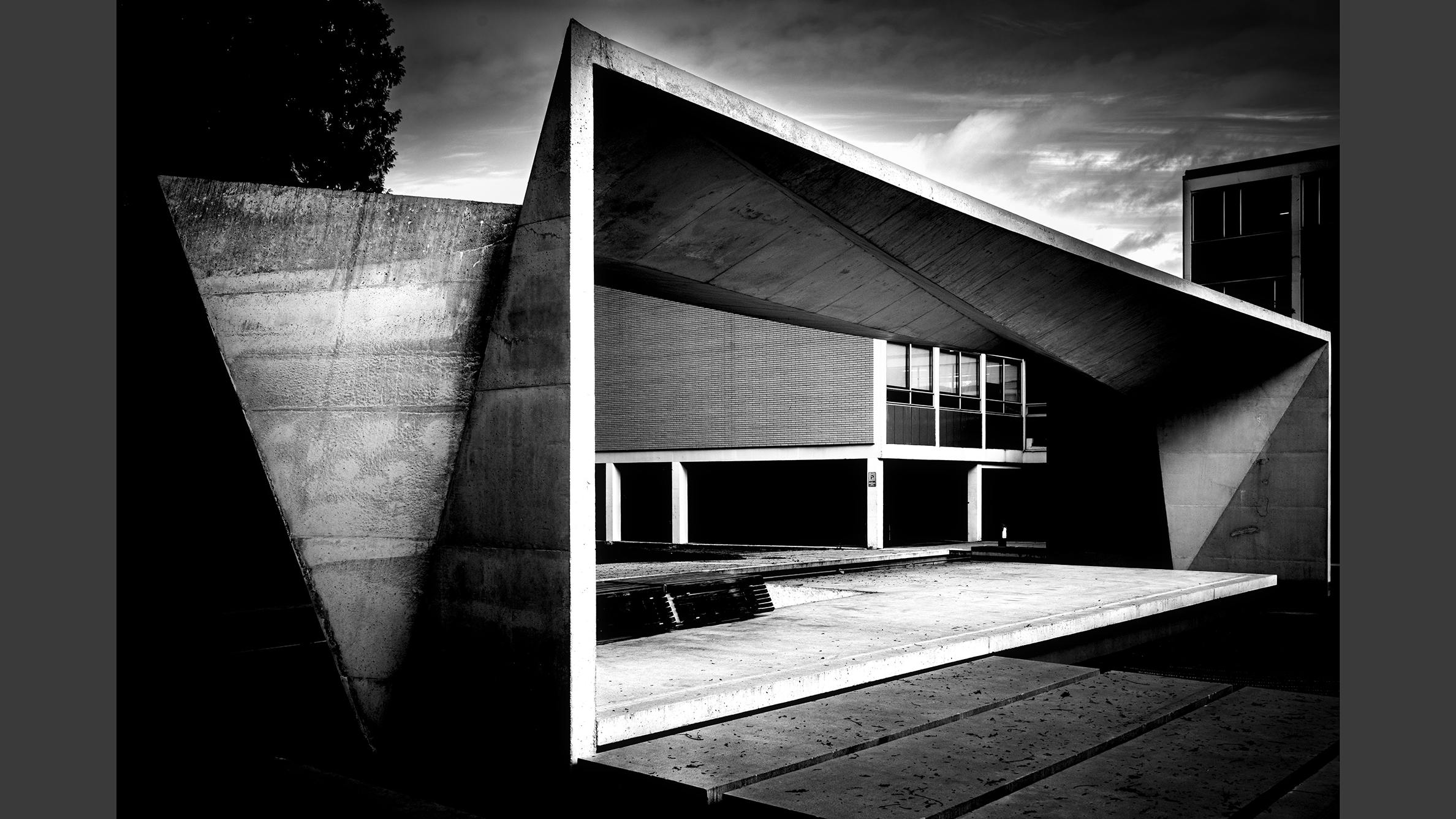Fujifilm GFX50S II vs GFX100S
The GFX50S II really drives down the price of medium format photography, but how does it compare to the existing GFX100S?
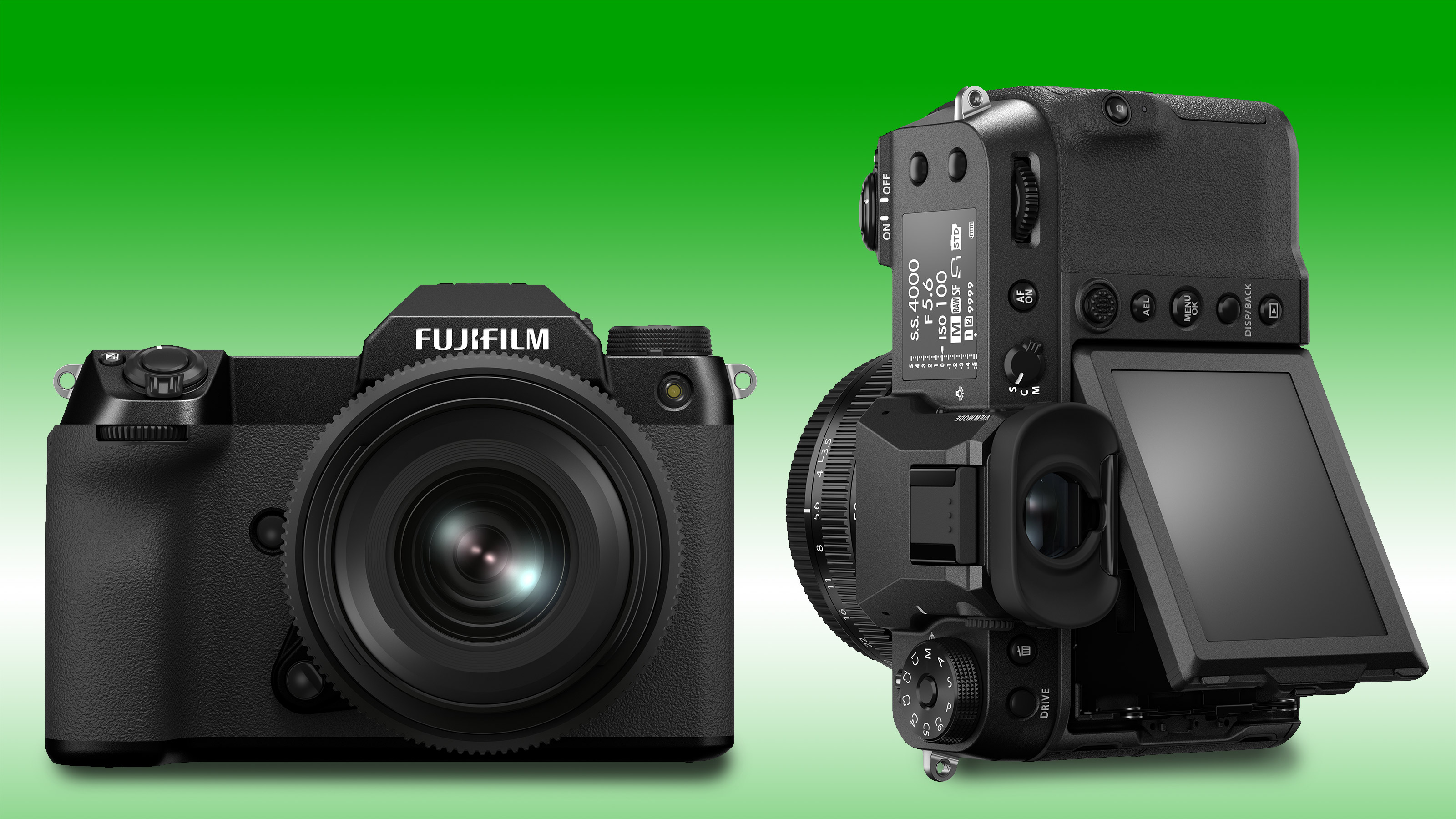
The Fujifilm GFX50S II is the company’s latest – and cheapest – medium format camera. It effectively replaces both the original GFX50S and the rangefinder style GFX50R – and on paper it’s better than both of them.
But it’s not Fujifilm’s only landmark medium format camera. The Fujifilm GFX100S, announced in January 2021, has twice the resolution and pricing so aggressive that it even undercuts the full frame Sony A1.
So which Fujifilm medium format camera should you buy? The GFX50S II is physically identical, as near as makes no difference, to the GFX100S, but currently sells for only two-thirds the price.
But if you expect the comparison to follow the usual lower-res vs higher-res playbook, you might expect the GFX50S II to be the obvious choice for low-light and video.
Not so fast! The GFX100S has some aces up its sleeve, and upturns the usual comparisons.
This all makes sense when you take into account that the GFX100S incorporates a newer generation of sensor, while the GFX50S II effectively has a modern refresh of an older design.
So if you’re still debating the GFX50S II vs GFX100, check out our breakdown of the key differences below:
1. Sensor
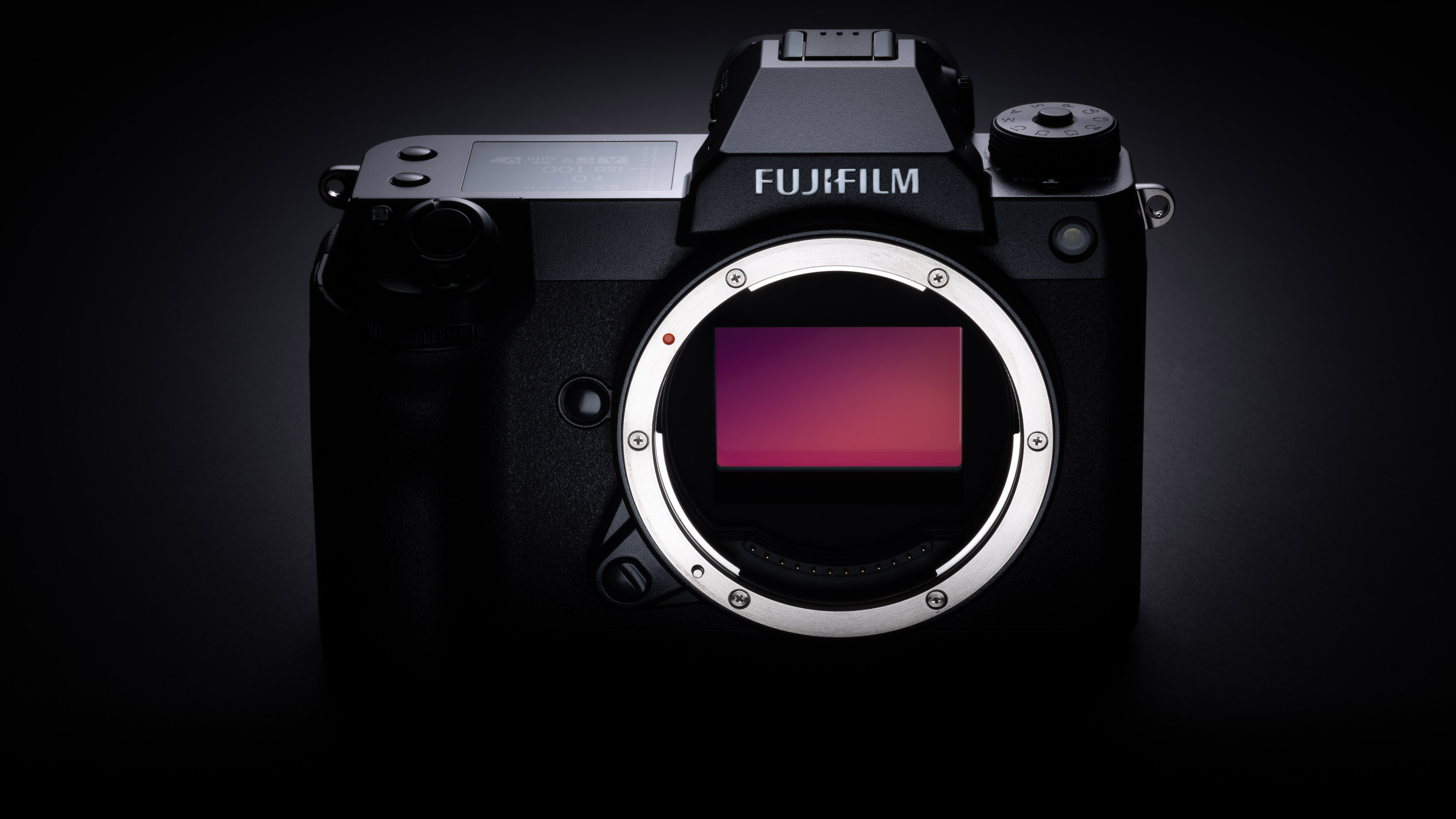
• GFX50S II: 43.8x32.9mm, 51.4MP
• GFX100S: 43.8x32.9mm, 102MP
The sensors in both cameras are exactly the same size. They are not ‘full frame’ medium format, which corresponds roughly to the old 645 medium format film negative, but more like an ‘APS-C medium’ format, if that makes any sense at all. In any event, they are approximately 1.7x larger than full frame sensors in area. If resolution is your main motivation, the GFX100S is the obvious choice – though the 50MP of the GFX50S II is likely to be enough for many users.
2. ISO range
• GFX50S II: ISO 100-12,800, exp 50-102,400, movie ISO 200-6,400
• GFX100S: ISO 100-12,800, exp 50-102,400, movie ISO 200-12,800, exp 25,600
The lower resolution of the GFX50S II might lead you to expect better low-light sensitivity, but that’s not necessarily the case – the GFX100S uses a newer generation of sensor and actually boasts higher sensitivities, at least for movies. We haven’t yet had a chance to run the GFX50S II through our usual lab tests yet, but the fact that Fujifilm quotes the same still image ISO range for both cameras suggest their real-world performance is likely to be close. The key point is that this is not necessarily a definite win for the GFX50S II.
3. IBIS
• GFX50S II: Max 6.5 stops
• GFX100S: Max 6 stops
Both of these cameras have in-body stabilization, which is a huge deal for medium format. Technically, the GFX50S II has a slight advantage, with a 0.5 stop increase in compensation for most lenses, but we assume this is down to algorithm tweaks rather than a fundamental redesign – these two cameras are practically identical, physically.
4. Autofocus
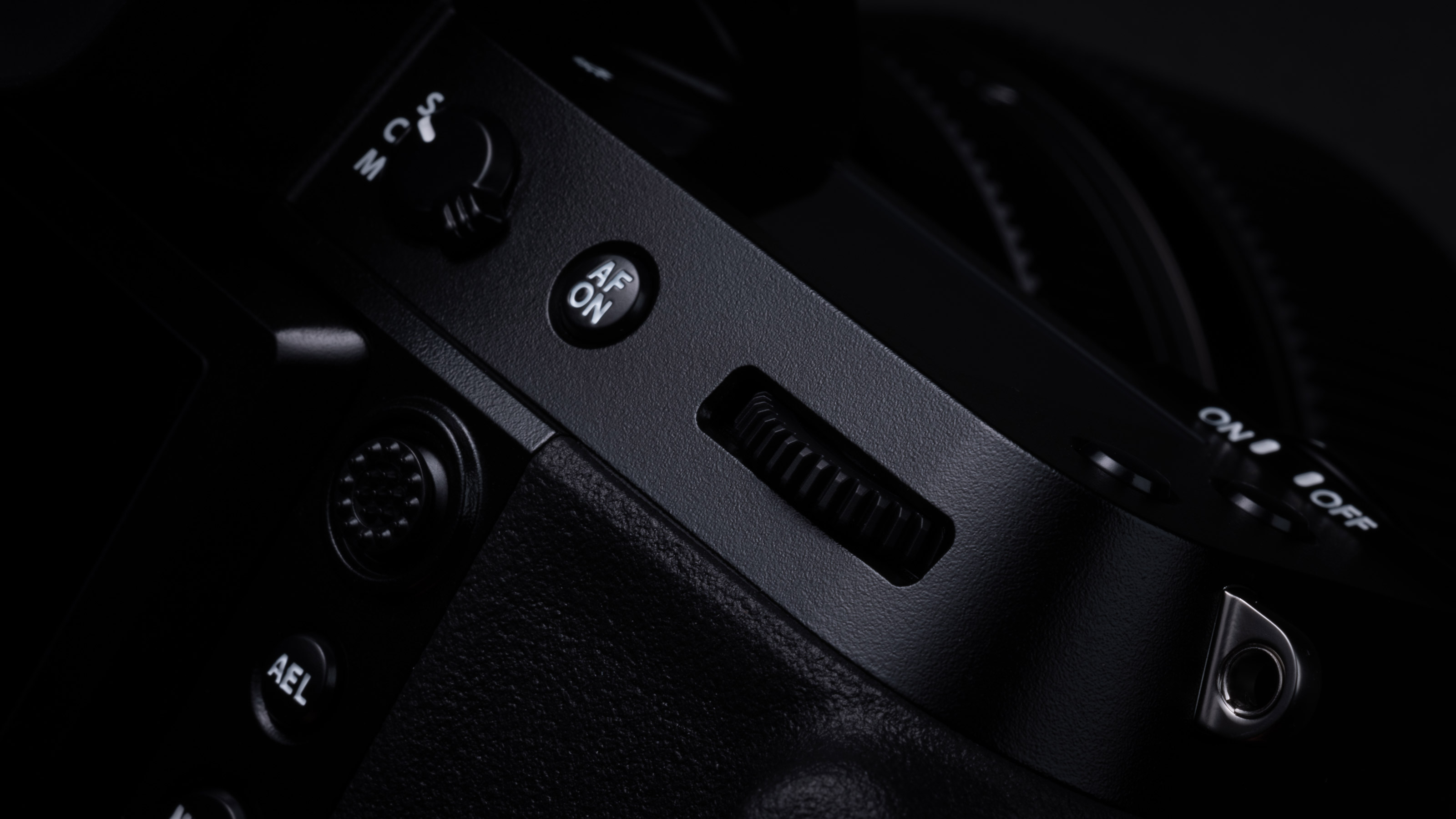
• GFX50S II: Contrast AF, enhanced, GFX100S algorithms
• GFX100S: Hybrid phase/contrast AF, 100% coverage
Here’s where the older-generation sensor comes into play. It was one with the newer GFX100 sensor that Fujifilm brought in hybrid contrast/phase detect AF, and the GFX50S II retains the contrast AF of the GFX50S and GFX50R, albeit with a speed increase and the AF algorithms of the GFX100S. In our brief tests so far, the GFX50S II does seem quite snappy for stills – and its continuous AF may be less relevant given its limited burst and video capabilities. Nevertheless, the GFX100S scores a significant win here.
5. Pixel Shift Multi-Shot
• GFX50S II: 16 shots, 200MP
• GFX100S: 16 shots, 400MP
Both cameras offer a high-resolution Pixel Shift Multi-Shot mode that quadruples the sensor’s resolution – so the GFX50S II can capture 200MP images, and the GFX100S 400MP photos. For outright resolution fans, it’s another win for the GFX100S.
6. Continuous shooting
• GFX50S II: 3fps mechanical shutter, 2.2fps electronic
• GFX100S: 5fps mechanical shutter, 2.9fps electronic
Interestingly, despite having double the resolution, the GFX100S is also fastest in burst mode, and capable of 5fps with its mechanical shutter and 2.9fps with the electronic shutter. The GFX50S II trails with 3fps mechanical and 2.2fps electronic – though in electronic shutter mode it can shoot compressed RAW files right up to the point the memory card is full. It’s another win for the GFX100S, though, and we’ll attribute it to a newer sensor with faster readout. Which also has an impact on video.
7. Video
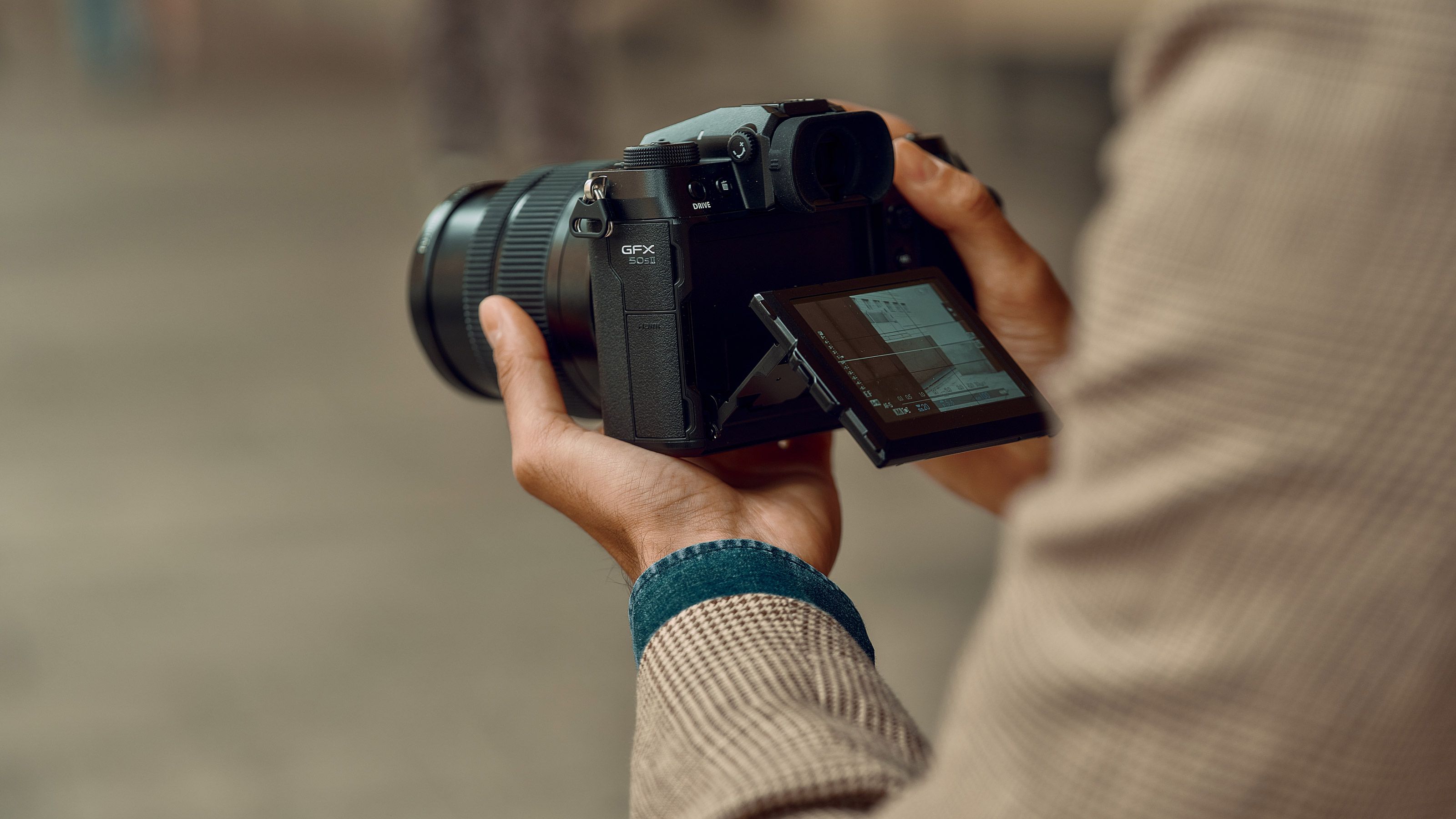
• GFX50S II: FHD 30p, Long GOP compression
• GFX100S: 4K30p 10-bit F-Log, ProRes RAW, All-intra/Long GOP
Surprisingly, the Fujifilm GFX50S II stays stuck at FHD 1920 x 1080 video capture, up to a maximum of 30p and using Long GOP (inter-frame) compression. So while the GFX50S II is definitely not the first camera you would choose for video, the GFX100S streaks ahead with 4K 30p 100-bit capture, the ability to output 12-bit ProRes RAW, a choice of Long GOP or all-intra compression and Fujifilm F-Log included. The GFX100S is a serious cinematic video camera, while the GHX50S II is probably for emergency video use only.
8. Film simulations
• GFX50S II: 19
• GFX100S: 19
Fujifilm makes a great play of its Film Simulation modes, and both cameras feature 19 different simulations, including the latest. Both offer in-camera adjustable grain levels, Color Chrome mode, Color Chrome Blue and Smooth Skin settings, with a +/-5 Clarity setting too. We suspect most GFX users will shoot raw, but there are plenty of in-camera ‘looks’ for those who don’t.
9. Controls
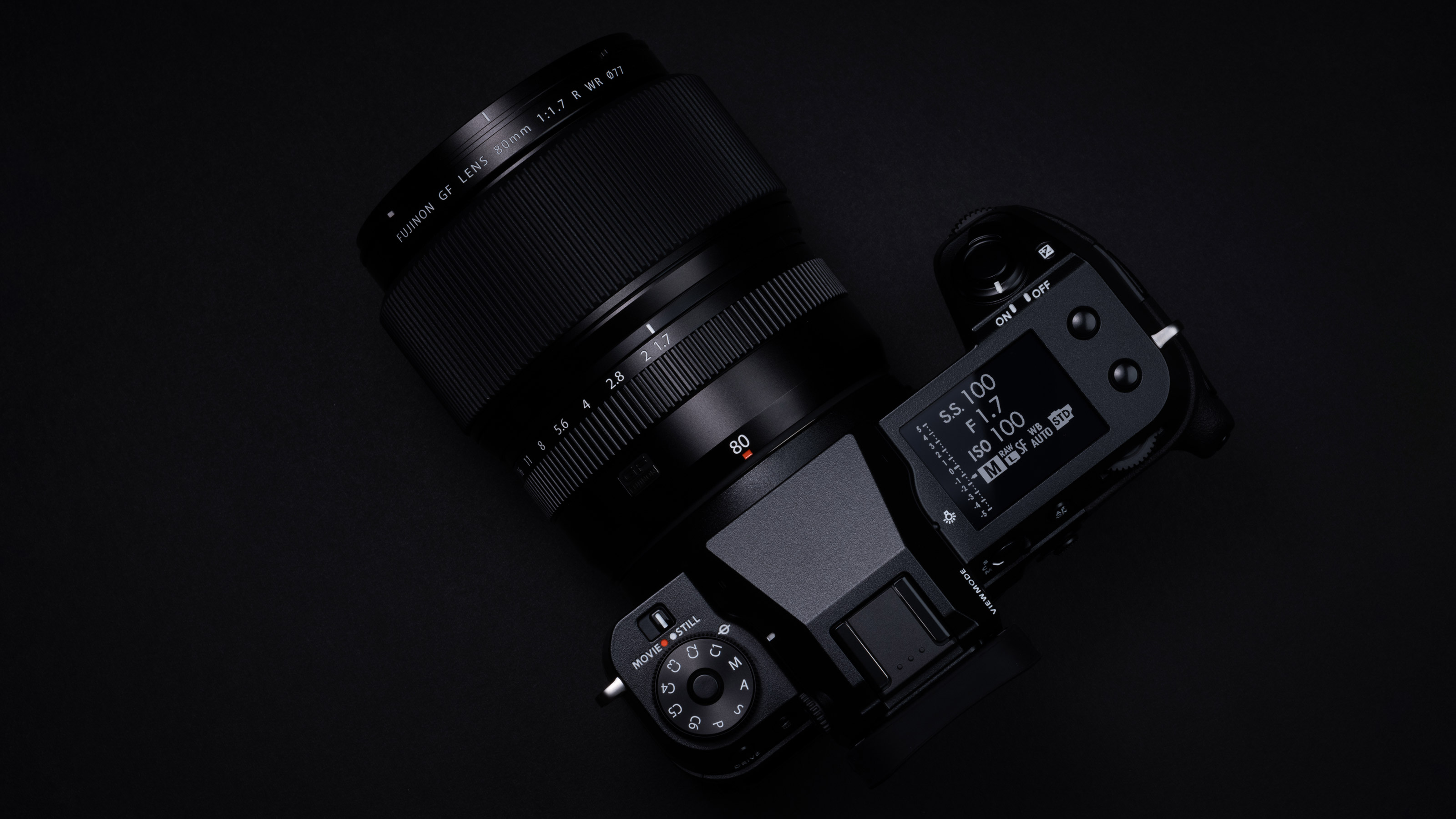
• GFX50S II: PSAM dial, focus lever, feather-touch shutter
• GFX100S: PSAM dial, focus lever, feather-touch shutter
The in-camera image settings (above) are the same on both cameras, and so are the rest of the physical features from here on in. The original GFX50S had a somewhat quirky control layout, but the GFX50S II adopts the body of the GFX100S, with its conventional mode dial, feather-touch shutter and focus joystick on the rear. It’s a lot more like using a chunky DSLR/mirrorless camera and less of a learning curve.
10. Viewfinder
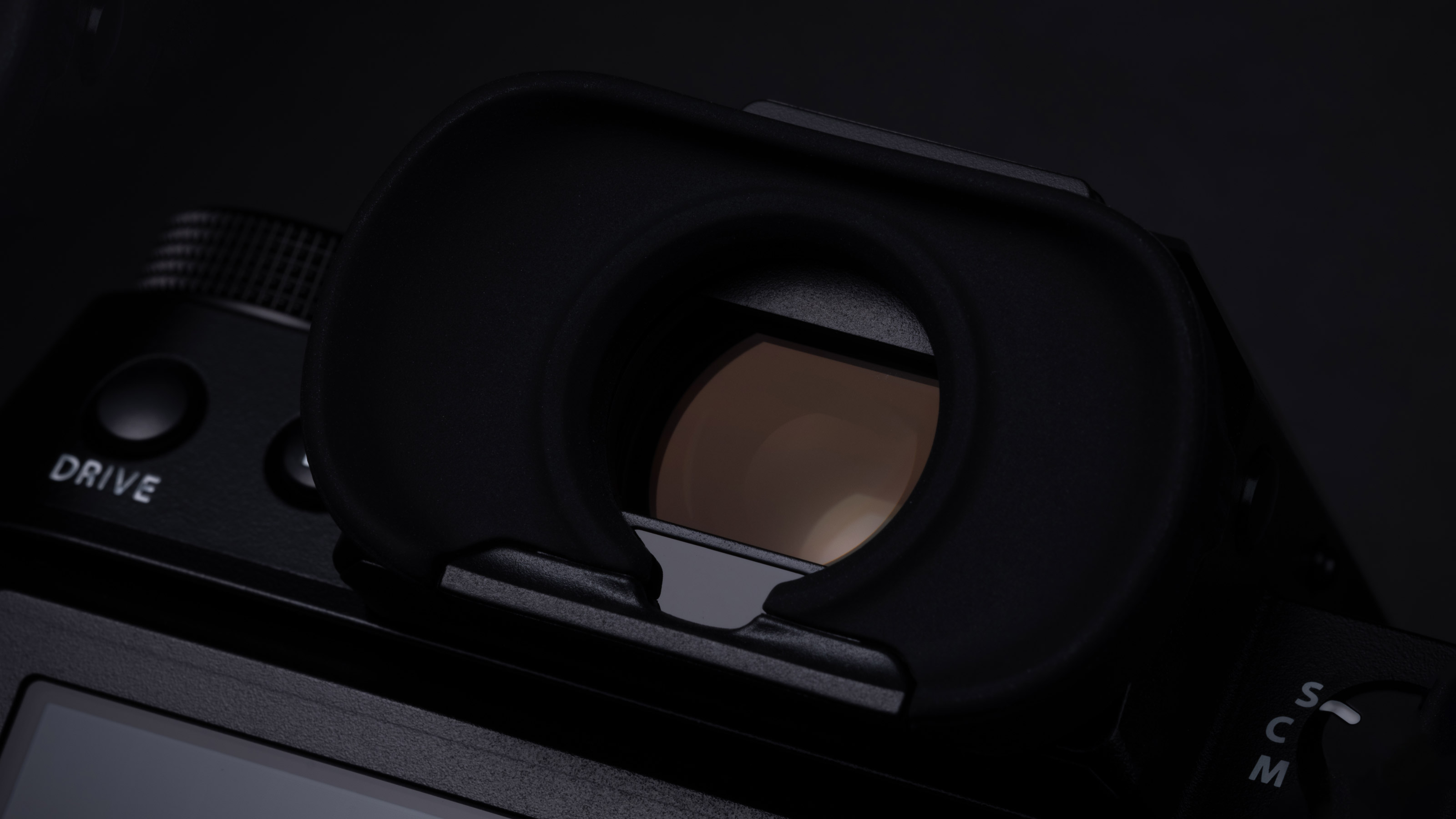
• GFX50S II: 0.5-inch OLED, 3.69m dots, 100% coverage, 0.77x magnification
• GFX100S: 0.5-inch OLED, 3.69m dots, 100% coverage, 0.77x magnification
The GFX50S II drops the interchangeable viewfinders of the original GFX50S and adopts the built-in EVF of the GFX100S. It’s a 0.5-inch panel with 3.69 million dots – not the highest, but enough – with 100% coverage and a 0.77x magnification. If that magnification sounds low, remember that this is usually measured with a 50mm lens, and on medium format that is a significantly wider angle of view.
11. LCD display
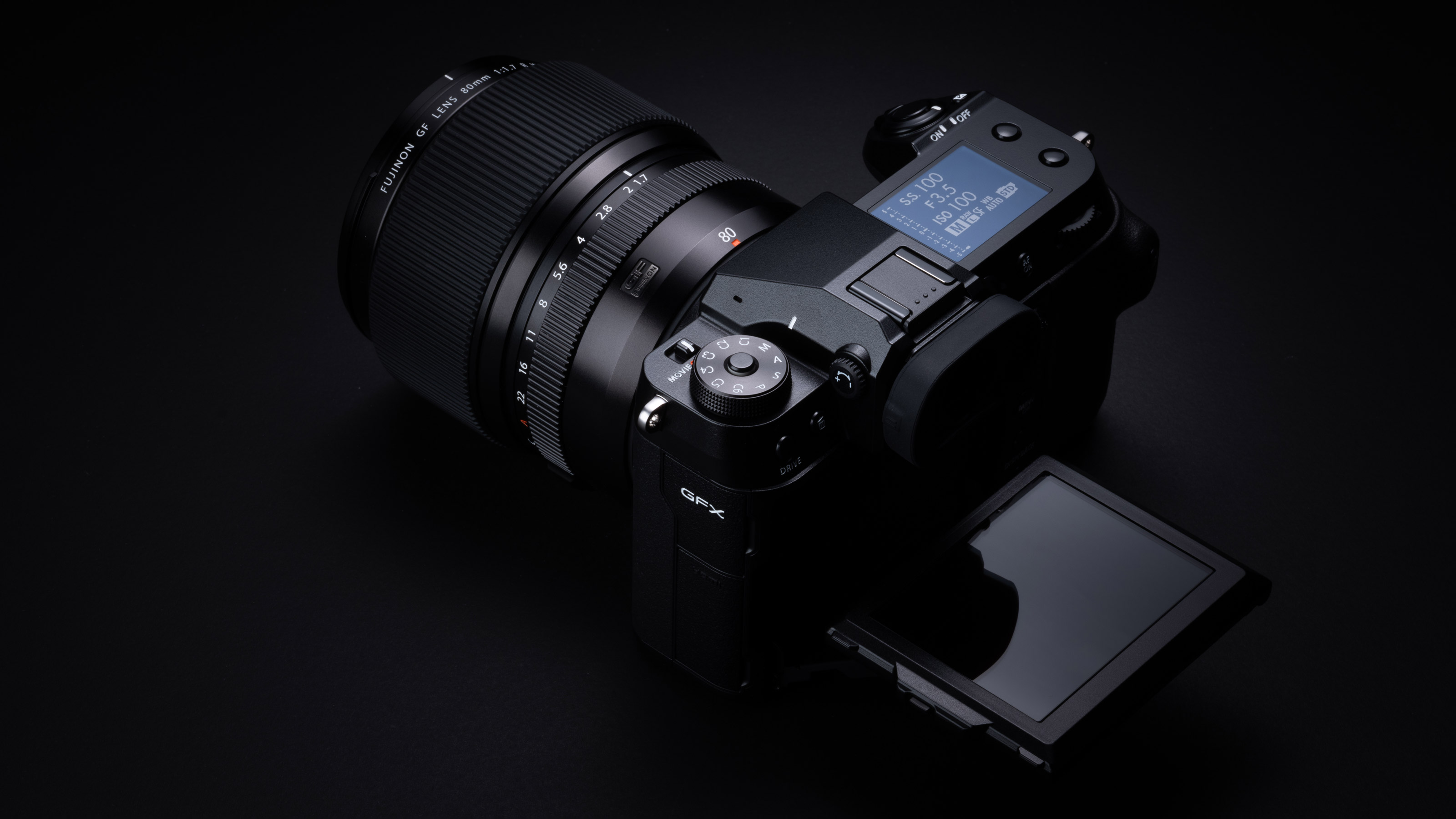
• GFX50S II: 3.2-inch touchscreen, 2.36m dots, three-way tilt
• GFX100S: 3.2-inch touchscreen, 2.36m dots, three-way tilt
Round the back, both cameras have a 3.2-inch fold-out touchscreen display with a generous 2.36m dot resolution. The screen design is the same on both – a clever three-way pivot that allows for vertical shooting too but keeps the screen close to the optical axis of the lens – unlike a flip-out various-angle screen.
12. Battery
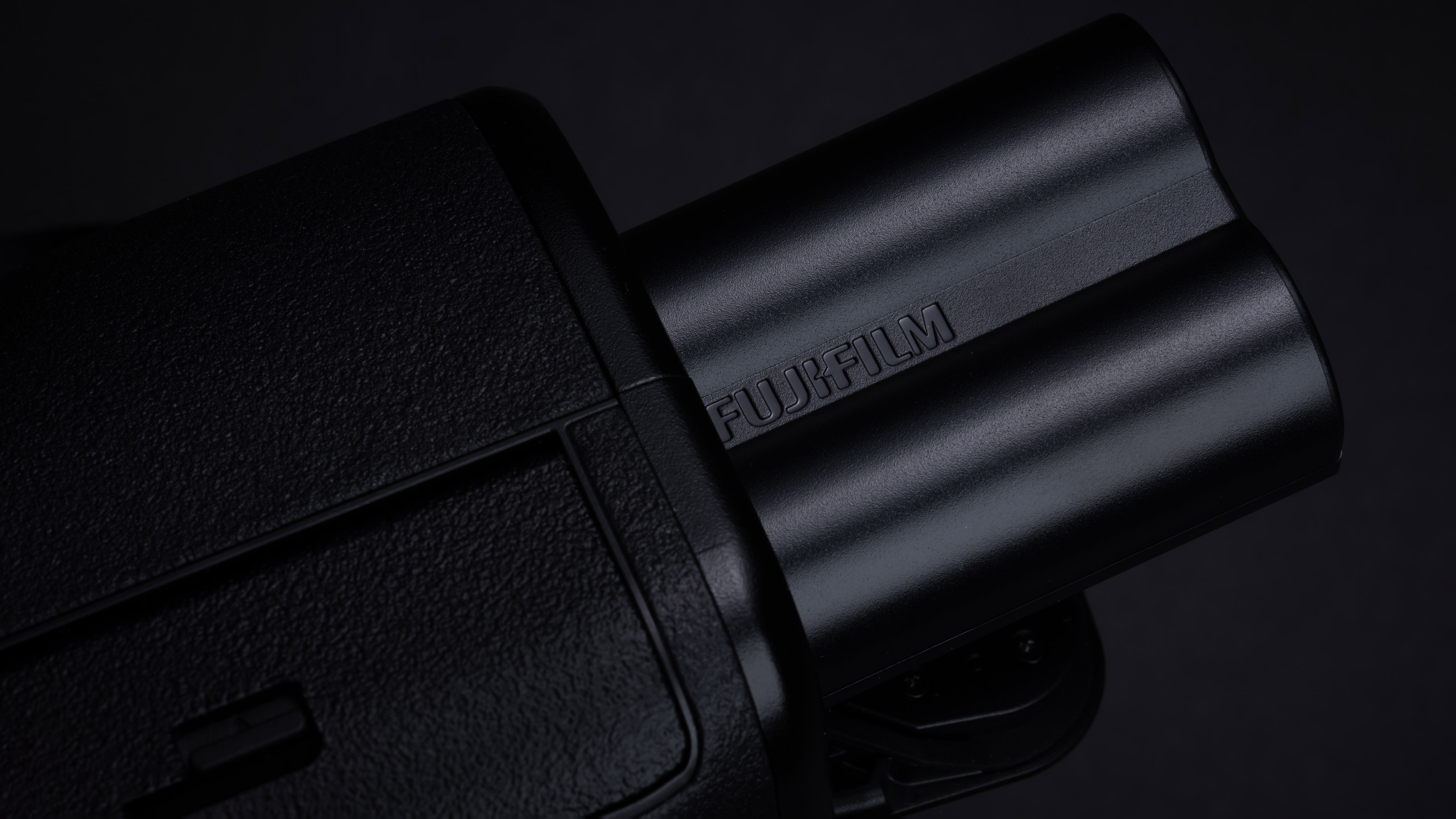
• GFX50S II: NP-W235 Li-ion, 455 shots
• GFX100S: NP-W235 Li-ion, 460 shots
Both cameras use the same NP-W235 Li-ion battery and, interestingly, the GFX100S quotes a slightly longer battery life. It’s only 5 shots, though, so it’s not significant. Perhaps the main point is that the more powerful features of the GFX100S don’t hurt its battery life.
13. Dimensions
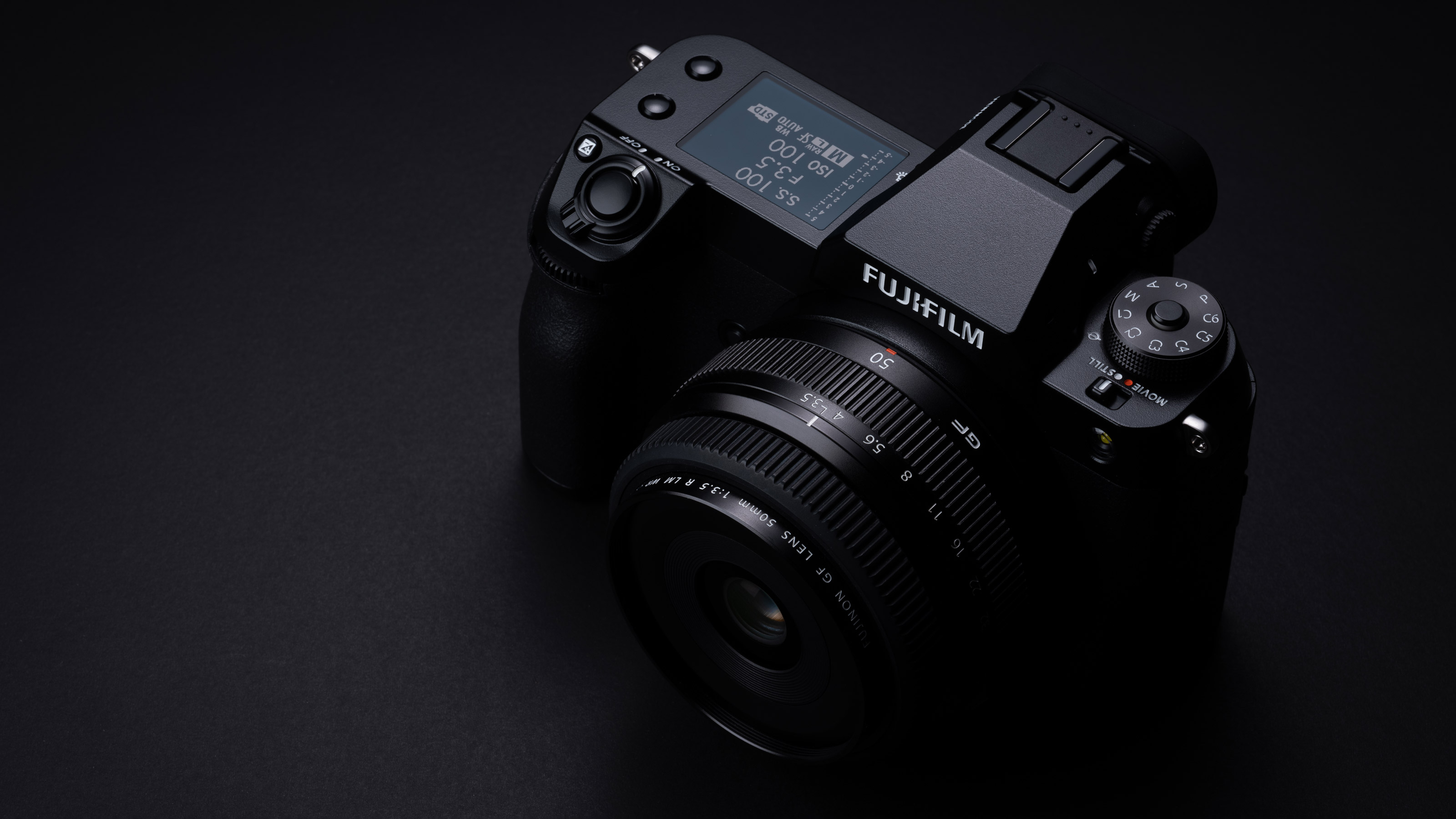
• GFX50S II: 150x104x87mm, 900g
• GFX100S: 150x104x87mm, 900g
The GFX50S II and GFX100S use the same body, and it’s not just the same in terms of appearance – both the external dimensions and the body only weight are identical.
Fujifilm GFX50S II vs GFX100S conclusions
Does the newer, cheaper camera close the gap on the slightly older, more expensive one? Not really. The comparison just emphasises the fact that the GFX100S sensor is a newer design with hybrid AF and, we guess, much faster readout.
This produces a different outcome to the one we’d normally expect when comparing cameras in this position. The GFX100S doesn’t just double the resolution of the GFX50S II, it comes with a faster burst mode, more advanced autofocus and far superior video capabilities.
This does NOT make the GFX50S II a bad camera. At two-thirds the price of the GFX100S, it offers a resolution and an image quality that can easily outstrip all but the best full frame cameras and at a price that can embarrass them too.
As an introduction to medium format photography, the GFX50S II is an exceptional camera, especially when you include its affordable kit lens, in-body stabilisation and familiar design and layout. But if you want the best rather than the most affordable alternative, the GFX100S is the one to go for – it has too many advantages over the GFX50S II to ignore.
How we test cameras
Why you can trust Digital Camera World
We test mirrorless and DSLR cameras both in real-world shooting scenarios and in carefully controlled lab conditions. Our lab tests measure resolution, dynamic range and signal to noise ratio. Resolution is measured using ISO resolution charts, dynamic range is measured using DxO Analyzer test equipment and DxO Analyzer is also used for noise analysis across the camera's ISO range. We use these real-world testing and lab results to inform our comments in buying guides. For compact cameras and phones, we judge on real world handling and photographic results alone.
Read more:
• Fujifilm GFX100S review
• Fujifilm GFX50S II review
• Best Fujifilm cameras
• Best medium format cameras
• Best professional cameras
Get the Digital Camera World Newsletter
The best camera deals, reviews, product advice, and unmissable photography news, direct to your inbox!

Rod is an independent photography journalist and editor, and a long-standing Digital Camera World contributor, having previously worked as DCW's Group Reviews editor. Before that he has been technique editor on N-Photo, Head of Testing for the photography division and Camera Channel editor on TechRadar, as well as contributing to many other publications. He has been writing about photography technique, photo editing and digital cameras since they first appeared, and before that began his career writing about film photography. He has used and reviewed practically every interchangeable lens camera launched in the past 20 years, from entry-level DSLRs to medium format cameras, together with lenses, tripods, gimbals, light meters, camera bags and more. Rod has his own camera gear blog at fotovolo.com but also writes about photo-editing applications and techniques at lifeafterphotoshop.com
